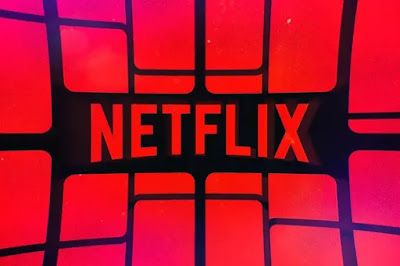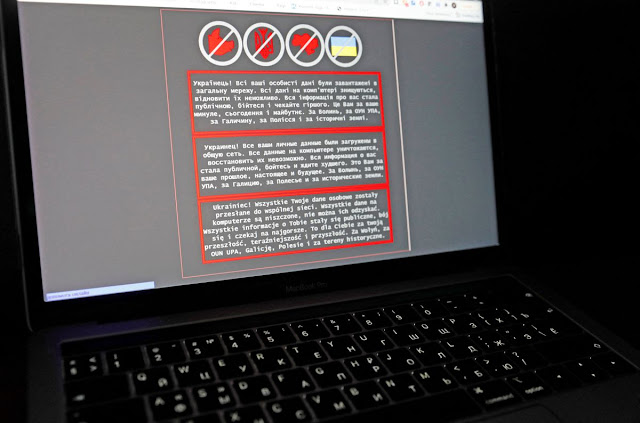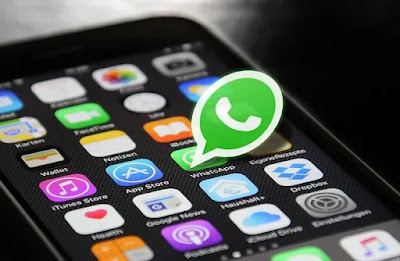 |
| Patrick Pleul | picture alliance | Getty Images |
Blog
Microsoft discloses malware attack on Ukraine govt networks
Microsoft said on Saturday that dozens of computer systems in an unknown number of Ukrainian government agencies were infected with destructive malware disguised as ransomware, a revelation that suggests a defacement attack that draws attention to official websites was a diversion.
The extent of the damage was not immediately clear. The attack comes as the threat of a Russian invasion of Ukraine looms and diplomatic talks to resolve the tense standoff appear to have stalled. Microsoft said in a short blog post that this amounted to the sound of an industry alert that it first detected the malware on Thursday.
This would coincide with the attack which temporarily took some 70 government websites offline. The disclosure followed a Reuters report earlier in the day quoting a senior Ukrainian security official as saying the disfigurement was indeed a cover for a malicious attack.
Separately, a senior private sector cybersecurity official in Kyiv told The Associated Press how the attack was successful: intruders entered government networks through a shared software vendor in a self -so-called SolarWinds 2020 Russian cyber-espionage campaign-style supply chain attack against Microsoft said in another technical article that the affected systems "spread across multiple government, non-profit, and technology and information Technology Organization.
"The malware is disguised as ransomware but, if activated by the attacker, would render the infected computer system inoperable," Microsoft said. In short, there is no ransom recovery mechanism.
Microsoft said the malware "runs when an associated device is turned off," a typical initial reaction to a ransomware attack. Microsoft said it was not yet able to assess the purpose of the destructive activity or associate the attack with a known threat actor.
Ukrainian security official Serhiy Demedyuk was quoted by Reuters for claiming that the attackers used malware similar to that used by Russian intelligence services. He is Deputy Secretary of the National Security and Defense Council.
WhatsApp inches forward on bringing Reactions to its app
WhatsApp, owned by Meta, is actively developing its app and working on new features. The app's latest beta on iOS reveals that a new feature may be coming soon worked on reactions to iMessage-like messages.
In their latest findings, they discovered that a relevant setting has appeared in the new beta on iOS. WABetaInfo shared that WhatsApp version 22.72 on iOS adds a new Reactions Notifications toggle to app settings.
With this toggle visible to beta users, the feature may come to the platform fairly quickly. Alternatively, the company may have accidentally revealed this setting and may remove it in future betas if the Reactions feature is not yet ready.
In 2020, Mark Zuckerberg shared that Meta (Facebook at the time) planned to merge the messaging systems of Facebook, Instagram, and WhatsApp. He said plans won't materialize until 2022. With WhatsApp likely to add reactions to messages soon, the gap between it and Facebook/Instagram direct messages (DMs) is narrowing even further.
The merger between Facebook and Instagram DMs has already happened, as both platforms support the same messaging features (for the most part). WhatsApp is still far from becoming similar to either of these two services. It remains to be seen whether the merger of the three will take place this year. It is also possible that the company is prevented from making this potential move for monopoly reasons.
Take a Look at The Largest And Most Detailed 3D Map of The Universe Ever Made
 |
| A 'CT scan' of the Universe across more than 5 billion light-years. (D. Schlegel/Berkeley Lab/DESI data |
The Dark Energy Spectroscopic Instrument (DESI), currently pointed skyward from its home in the Nicholas U. Mayall Telescope at the Kitt Peak National Observatory in Arizona, is tasked with tracking the expansion of space, to study dark energy and create the most detailed 3D map. of the Universe that was never assembled.
It's only been seven months since the DESI mission began, and we already have a record-breaking, stunning three-dimensional image of the galaxy all around us, demonstrating DESI's capabilities and potential for mapping space.
DESI has already cataloged and tracked over 7.5 million galaxies, with over a million new additions per month. When the scan is fully completed in 2026, more than 35 million galaxies would have been mapped, giving astronomers a huge library of data to mine.
"There's a lot of beauty in there," says Lawrence astrophysicist Julien guy in California. "In the distribution of galaxies on the 3D map, there are huge clusters, filaments and voids.These are the largest structures in the Universe.
But within them you will find an imprint of the early Universe and the story of its expansion since DESI is made up of 5,000 optical fibers, each individually controlled and positioned ionized by its own little robot These fibers must be precisely positioned within 10 microns, less than the thickness of a human hair, then catch glimpses of light as they filter through the Earth of the cosmos.
Through this fiber network, the instrument takes color spectrum images of millions of galaxies, covering more than a third of the entire sky, before calculating how much the light has been redshifted – that is, how much it's been pushed towards the red end of the spectrum due to the expansion of the Universe.
As this light can take up to several billion years to reach Earth, it's possible to use redshift data to see depth in the Universe: the greater the redshift, the farther away something is. What's more, the structures mapped by DESI can be reverse engineered to see the initial formation that they started out in.
The main objective of DESI is to reveal more about the dark energy that is thought to make up 70 percent of the Universe as well as speeding up its expansion. This dark energy could drive galaxies into an infinite expansion, cause them to collapse back on themselves or something in between – and cosmologists are keen to narrow down the options.
[DESI] will help us search for clues about the nature of dark energy,” Carlos Frenk, a cosmologist at Durham University in the UK, told the BBC. We will also learn more about dark matter and the role it plays in how it happens, forms galaxies such as the Milky Way, and how the universe evolves.
The 3D map that has already been released shows that scientists don't have to wait for DESI to finish its work to start benefiting from its deep look into space explores whether or not small galaxies have their own black holes like large galaxies.
The best way to spot a black hole is to identify the gas, dust and other material dragged into it, but that's not easy to see in small galaxies - something where high-precision spectral data collected by DESI should help. Then there's the study of quasars , particularly bright galaxies powered by supermassive black holes, which serve as clues to billions of years of space history.
DESI will be used to test a hypothesis around quasars: that they start out surrounded by an envelope of dust that is chased away over time. The amount of dust around a quasar is believed to affect the color of the light it emits, making it a perfect job for DESI.
The tool should be able to collect information on around 2.4 million quasars before its survey is complete."DESI is really great because it collects much fainter, much redder objects," says Durham University astronomer Victoria Fawcett.
"We're finding quite a few exotic systems, including large samples of rare objects that we've simply never seen able to study in detail before.
Source: ScienceAlert
Netflix raises monthly subscription prices in U.S., Canada
 |
| Illustration by Alex Castro / The Verge |
Netflix is raising the prices of all its plans in the United States today. The enterprise standard plan will increase from $14 to $15.50 per month, while the 4K plan will increase from $18 to $20 per month. The basic plan, which does not include HD, goes up to $10 per month from $9 per month. Prices in Canada are also on the rise.
Price increases take effect immediately for new subscribers. For existing subscribers, the changes will be rolled out "gradually", with Netflix promising to email members 30 days before the price hike takes effect. The prices for a Netflix package have steadily increased over the past few years.
The standard plan went from $13 to $14 per month at the end of 2020, after dropping from $11 to $13 in 2019. Previously, Netflix raised prices in 2017 and 2015. When Netflix announced its first price hike in 2014, the company was so worried about losing subscribers with a $1 a month hike that it allowed existing members to hold their price for two years. It hasn't offered such a generous perk in the years since then.
The price hikes come during a successful but challenging moment for Netflix. The company already has a wealth of subscribers across the US, and adding more is a challenge — making price hikes an obvious answer for how it can make more money. At the same time, Netflix is now competing with several other serious streaming services for attention, including Disney Plus and HBO Max, and it’s been spending big on content to keep up.
“We are updating our pricing so that we can continue to offer a wide variety of quality entertainment options,” a Netflix spokesperson told Reuters.
"As always, we offer a range of plans so members can choose a price that fits their budget. Netflix isn't the only service that has increased prices lately. Hulu has increased the price of its funded tiers by advertising and without advertising of $1 per month in October.
North Korean hackers said to have stolen nearly $400 million in cryptocurrency last year
North Korean hackers stole nearly $400 million worth of cryptocurrency in 2021, making it one of the most profitable years yet for cybercriminals in the severely isolated country, according to a new report.
Hackers launched at least seven different attacks last year, mostly targeting corporate investments and centralized exchanges with a variety of tactics including phishing, malware and social engineering, according to a report by Chainalysis, a company that tracks cryptocurrencies.
Cybercriminals attempted to gain access to organizations' "hot" wallets: Internet-connected digital wallets, and then transfer funds to accounts controlled by the DPRK. The thefts are the latest indication that the heavily sanctioned country continues to rely on a network of hackers to help fund its domestic programs.
A confidential UN report previously accused North Korean regime leader Kim Jong Un of carrying out "operations against formerly moving financial institutions and virtual currency" to pay for weapons and keep the country afloat North Korean economy.
Last February, the US Department of Justice charged three North Koreans with conspiring to steal more than $1.3 billion from banks and businesses around the world and orchestrating crypto thefts. digital currency.
"North Korea is, in most respects, cut off from the global financial system by a long sanctions campaign by the United States and its foreign partners." said Nick Carlsen, an analyst at blockchain intelligence firm TRM Labs. “As a result, they have taken to the digital battlefield to steal cryptocurrencies, essentially [a] high-speed internet bank robbery, to fund weapons programs, nuclear proliferation and other activities.
North Korea's hacking efforts have benefited from this.The rise in value of Rising prices and the use of cryptocurrencies have generally made digital assets increasingly attractive to malicious actors, which led to more successful cryptocurrency thefts in 2021.
According to Chainalysis, most of the thefts in the past year were committed by the Lazarus Group, a hacker group with ties to North Korea that was previously linked to the Sony Pictures hack, among other incidents. ie North Koreans, in addition to sanctiones cybersecurity defensive measures such as crimes such as criminql have no real chance of being extradited.
As the cryptocurrency market becomes more popular, "we are likely to see continued interest from North Korea in targeting cryptocurrency companies that are young and that are building cyber defenses and anti-virus controls. -money laundering," Carlsen said.
TechCrunch 2022-01-14 14:42:00
Unvaccinated people infected with the Omicron variant of coronavirus may be less prone to severe illness and requiring hospital care or dying than was the case with previous variants, a South African study showed on Friday.
The study, by the National Institute of Communicable Diseases (NICD) in the Western Cape region, which has not yet been peer-reviewed, concluded.compared about 11,600 patients from the first three COVID-19 waves with about 5,100 from the Omicron-driven wave that began in November.
Omicron globally has tended to cause less severe disease, and proportionally fewer hospital admissions and deaths, than previous variants.
Scientists are trying to determine the extent to which this is because of higher immunity rates engendered by vaccination or past illness, or Omicron is intrinsically less nasty.
The study concluded that about a quarter of the reduced risk of severe disease with Omicron was attributable to characteristics of the virus itself.
“In the Omicron-driven wave, severe COVID-19 outcomes were reduced mostly due to protection conferred by prior infection and/or vaccination, but intrinsically reduced virulence may account for an approximately 25% reduced risk of severe hospitalisation or death compared to Delta,” the study said.
Teen hacker finds bug that lets him control 25+ Teslas remotely
 |
Getty Images |
A young hacker and computer security researcher has found a way to remotely interact with more than 25 Tesla electric vehicles in 13 countries, according to a Twitter thread he posted yesterday.
David Colombo explained in the thread that the flaw "wasn't a vulnerability in Tesla's infrastructure. It's the owner's fault." He claimed to be able to remotely disable a car's camera system, unlock doors and open windows, and even start driving without a key. It could also determine the exact location of the car.
However, Colombo has made it clear that it can't actually interact with Tesla's steering, throttle, or brakes, so at least we don't have to worry about an army of remote-control electric vehicles doing a Fate reenactment.
Colombo says he reported the issue to Tesla's security team, which is investigating the matter.
On a related note, early Wednesday morning, a third-party app called TezLab reported seeing “multiple thousand Tesla Authentication Tokens expiring at the same time.”
The TezLab application uses Tesla's APIs which allow applications to perform operations such as accessing the car and activating or deactivating the anti-theft camera system, unlocking doors, opening windows, etc
Musk says Tesla to accept dogecoin for merchandise
 |
| Representation of cryptocurrency Dogecoin is seen in this illustration taken November 29, 2021. REUTERS/Dado Ruvic/Illustration/File Photo |
Tesla Inc (TSLA.O) will accept the meme-based cryptocurrency dogecoin as payment for its products such as the "Giga Texas" belt buckle and mini electric vehicle models, CEO Elon Musk said on Friday in a tweet.
The move which sent dogecoin prices up 14% higher, comes a month after Musk said Tesla would test the digital token as a payment option. Musk, a voucal of cryptocurrencies has heavily influenced dogecoin and bitcoin prices, and at one point said the company would accept bitcoin for the purchase of its cars before scrapping the plans.
Tesla's products, which also include the recently launched "Cyberwhistle" and "Cyberquad for Kids," are a hit with its fans and typically sell out within hours of listing.
"Some have noticed that goods for doge are depleting even faster than for dollars. This news is a good example of the continued penetration of cryptocurrencies into corporate culture," said Alex Kuptsikevich, senior financial analyst at FxPro.
Musk on dogecoin's tweets, including one where he called it the "people's crypto," turned the once obscure digital currency that started as a social media joke into a speculator's dream. The price of the token has increased by around 4,000% in 2021.
Tesla revealed last year that it purchased $1.5 billion worth of bitcoin, and Musk also claimed to own bitcoin and dogecoin.
Tesla faces intense competition as legacy automakers like Ford Motor Co (FN) and startups such as Rivian Automotive (RIVN.O) are set to launch their electric car this year. Tesla's long-awaited Cybertruck will begin production in the first quarter of 2023, pushing its plan to start production to late 2022, Reuters reported.
Massive cyberattack hits Ukrainian government websites as West warns on Russia conflict
 |
| Image Credit: REUTERS/Valentyn Ogirenko/Illustration |
A massive cyber attack warning Ukrainians to "be afraid and expect the worst" hit government websites on Thursday night, leaving some websites inaccessible on Friday morning and prompting Kyiv to open an investigation.
Ukrainian Foreign Ministry spokesman told Reuters it was too early to say who could be behind the attack, but said Russia had launched similar attacks in the past.
The cyberattack, which affected the Foreign Ministry, the Cabinet of Ministers and the Security and Defense Council, among others, comes as Kyiv and its allies sound the alarm on a possible new Russian military offensive against Ukraine.
"It's too early to draw conclusions, but there is a long history of (cyber) Russian attacks on Ukraine in the past," the Foreign Ministry spokesman told Reuters.
The Russian foreign ministry did not immediately respond to a request for comment, and Russia has previously denied cyberattacks against Ukraine.
"Ukrainian! All your personal data was uploaded to the public network. All data on the computer is destroyed, it is impossible to restore it," said a message visible on the hacked government websites, written in Ukrainian, Russian and Polish.
"All information about you has become public, be afraid and expect the worst. This is for your past, present and future."
After a wave of inconclusive talks this week on security in Europe, the United States on Thursday warned that the threat of a Russian military invasion of Ukraine was high.
Russia said the dialogue continued but reached an impasse as it tried to persuade the West to prevent Ukraine from joining NATO and roll back decades of alliance expansion in Europe, demand that Washington has called "non-starters".
Commenting on a cyber attack a senior Ukrainian security official told Reuters: "All cybersecurity subjects were aware of such possible provocations from the Russian Federation. Therefore, the response to these incidents is being carried out in accordance with the government.
The government later claimed that he had restored most of the affected sites and that no personal data had been stolen. Many other government websites were suspended to prevent the attack from spreading, it said .
Relations between Ukraine and Russia collapsed after Moscow's annexation of Crimea in 2014 and the outbreak of war between the same year. Kyiv forces and Russian-backed separatists in eastern Ukraine.
The United States said on Thursday that Russia could try to create a pretext to launch a new military assault on Ukraine by comparing the situation with the circumstances of 2014.
Russia warned of possible "catastrophic consequences" if there was no agreement on what the Kremlin called the security red lines, but said Moscow had not abandoned diplomacy and would even speed it up.
The Russian comments reflect a trend in which Moscow claims to want to pursue diplomacy but rejects calls to reverse the training of its troops near Ukraine and warns of unspecified consequences for Western security if its demands are not heard.
Ukraine has suffered a series of cyberattacks since 2014, which have cut power, frozen supermarket checkouts and forced authorities to back the hryvnia currency after the bank's computer systems crashed. Ukraine believes the attacks are part of what it calls Russia's "hybrid war" against Ukraine and its allies.
In 2017, a virus called NotPetya by some experts hit Ukraine and spread around the world, crippling thousands of machines as it spread to dozens of countries.
The Kremlin has denied any involvement, dismissing "general unfounded accusations".




